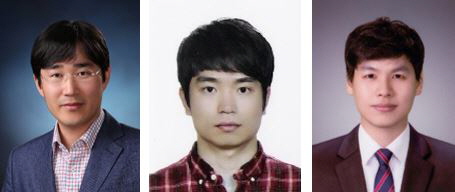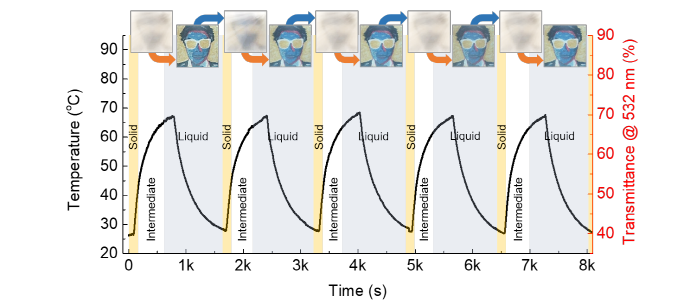Department News
Prof. Seung Hwan Ko’s Research Team Develops ‘Smart Window’ Using Phase Transition of Supersaturated Matter
SNU Dept. of Mechanical and Aerospace Engineering Prof. Seung Hwan Ko’s Research Team Develops Smart Window<?xml:namespace prefix = "o" ns = "urn:schemas-microsoft-com:office:office" />
Using Phase Transition of Supersaturated Matter
- Sodium acetate turns opaque with external stimulus, and transparent with heat; the technology utilizes this characteristic
- Not affected by sunlight or heat, allowing for better control over color change

▲ Prof. Seung Hwan Ko of SNU Dept. of Mechanical and Aerospace Engineering, Dr. Hyunmin Cho, Dr. Jinhyeong Kwon of Korea Institute of Industrial Technology (From left to right)
On July 30th, SNU College of Engineering (Dean: Kookheon Char) announced that Dept. of Mechanical and Aerospace Engineering Professor Seung Hwan Ko’s research team developed a ‘smart window’ that operates on a new type of mechanism using sodium acetate, which is commonly found in handwarmers used in winter. The new MTC (mechano-thermo-chromic) smart window, unlike any other smart windows, uses mechanical stimulus and thermal energy.
Compared to normal glass, smart windows have a variety of advantages including privacy, security, artistic design, and efficient energy management of buildings. Smart windows with organic/inorganic color changeability, and operation mechanism based on phase transitions have been in development. This research provides a solution to limits such as constant consumption thermal energy and vulnerability to external environment like sunlight or temperature.
The team used a simple chemical principle of crystal effect and dissolution of sodium acetate compound. Sodium acetate remains as liquid in a supersaturated state, but when mechanical force is applied, it changes into sodium acetate trihydrate crystal and becomes opaque. Also, if heat is applied to sodium acetate crystal, it liquifies and becomes transparent. This type of operating mechanism is reversible and can be managed with simple mechanical stimulus and thermal energy input.
The MTC smart window system can be managed in an environment with strong UV rays, which makes it easier for commercialization. “We can switch the transparency of the window simply with mechanical stimulus and heating. No electric or thermal energy is needed,” said Prof. Ko. “The MTC device is liquid-based, packaged with transparent, flexible material. It is easy to apply to curved surfaces and has high durability due to its simple operating mechanism.”
The research was published on the July 26th issues of Science Advances (Lead author: Hyunmin Cho, Jinhyeong Kwon; Corresponding author: Prof. Seung Hwan Ko). It was supported by the National Research Foundation of Korea.

Figure 1. Operation mechanism of mechano-thermo-chronic device and transparency change

Figure 2. Testing for durability and optical transmittance control by repeating reversible operations
Related articles
SNU Engineering News https://eng.snu.ac.kr/node/17369
Chosun Biz SNU Research Team Develops Smart Window with Wintertime Handwarmer Material http://biz.chosun.com/site/data/html_dir/2019/07/31/2019073101364.html

